How to Choose the Perfect Office Work Chair for Your Needs
Choosing the perfect office work chair is crucial for enhancing productivity and ensuring employee well-being in today's fast-paced corporate environment. According to a survey conducted by the American Chiropractic Association, approximately 80% of Americans experience back pain at some point in their lives, with many attributing their discomfort to poor seating choices. Furthermore, a report by the Occupational Safety and Health Administration (OSHA) emphasizes that ergonomically designed office work chairs can reduce the risk of musculoskeletal disorders by 30%.

As employees spend an average of 8 hours per day seated, selecting the right chair not only improves posture but also contributes significantly to overall job satisfaction and efficiency. This guide will explore essential factors to consider when choosing office work chairs tailored to meet diverse needs, ensuring both comfort and productivity in the workplace.
Identifying Your Unique Comfort and Support Needs
Choosing the perfect office chair starts with understanding your unique comfort and support needs. Every individual has a different body type and work style, which affects how they sit for extended periods. It's crucial to assess your posture and the level of support you require. For instance, if you often experience back pain, look for chairs with adjustable lumbar support that conforms to the natural curve of your spine.
**Tips:** When testing a chair, adjust the height and armrests to find the best position for your body. Ensure your feet are flat on the floor and your knees are at a 90-degree angle. Comfort is key, so don't hesitate to take your time in trying out various options.
Additionally, consider the materials and cushioning of the chair. Breathable fabrics can enhance comfort, especially in warmer environments, while memory foam offers excellent pressure relief for those sitting for long hours. A chair with a seat that is too firm can lead to discomfort, while one that is too soft may not provide the necessary support.
**Tips:** Pay attention to the chair's adjustability features, as being able to customize the height, tilt, and armrest position can significantly improve your sitting experience. Always prioritize the combination of comfort and support tailored to your individual needs.
Office Work Chair Comfort Level Analysis
The chart above displays the average user comfort ratings for various features of office work chairs. Ergonomic design and lumbar support are rated highest, indicating their importance in enhancing comfort during long hours of work.
Understanding Different Chair Types and Their Benefits
When selecting the perfect office work chair, understanding the different types and their associated benefits is crucial. Office chairs can broadly be categorized into task chairs, ergonomic chairs, executive chairs, and gaming chairs, each designed to meet varied needs and preferences.
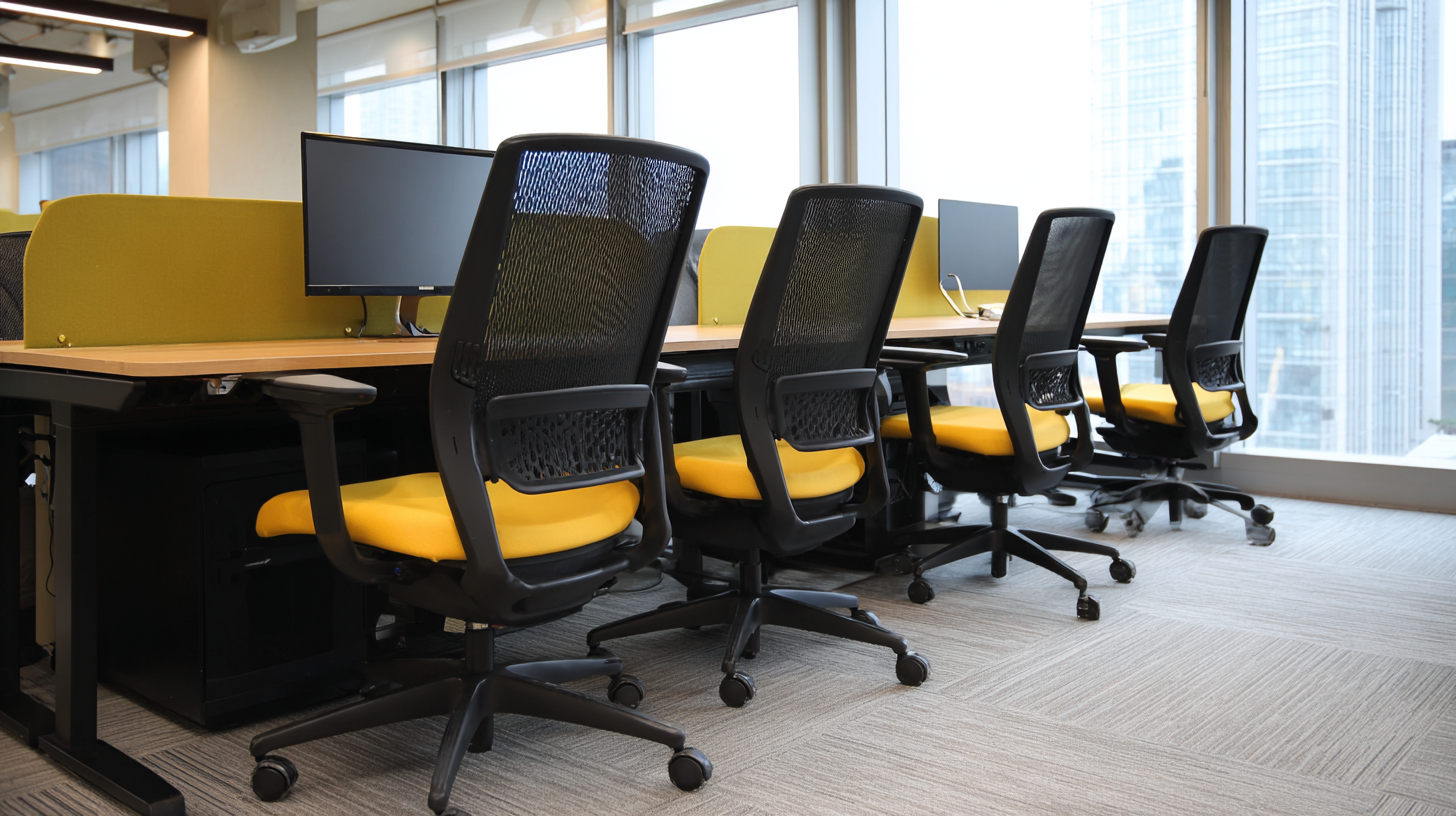 Task chairs are often affordable and functional, suitable for short-term use, while ergonomic chairs are designed for long-term comfort and support, reflecting a growing awareness of the importance of posture in workplace settings. A study from the Occupational Safety and Health Administration (OSHA) highlights that proper seating can reduce workplace injuries by up to 50%, underscoring the importance of investing in a quality chair.
Task chairs are often affordable and functional, suitable for short-term use, while ergonomic chairs are designed for long-term comfort and support, reflecting a growing awareness of the importance of posture in workplace settings. A study from the Occupational Safety and Health Administration (OSHA) highlights that proper seating can reduce workplace injuries by up to 50%, underscoring the importance of investing in a quality chair.
Executive chairs, on the other hand, offer a combination of aesthetics and comfort, catering to professionals who value both style and support. Gaming chairs, with their ergonomic design and adjustable features, have also gained popularity as more people work from home. The Global Office Furniture Market is anticipated to reach $141.94 billion by 2027, driven in part by the increasing demand for ergonomic seating solutions. As you navigate this vast market, consider your specific needs—whether it’s flexibility for chair yoga, which incorporates comfortable positioning and stretches, or firm support for all-day sitting.
Evaluating Material Quality and Durability for Long-Term Use
When selecting the perfect office work chair, evaluating material quality and durability is crucial for long-term use. According to the American Physical Therapy Association, an ergonomic chair can potentially reduce the risk of musculoskeletal disorders by up to 30%. To ensure your chair lasts, consider materials like high-density foam, which retains its shape better than standard foam, and upholstery options such as premium leather or breathable mesh. A study by the Global Workplace Analytics found that durable materials significantly impact employee satisfaction and productivity, with 70% of employees stating they prefer sitting in a chair that feels robust and well-made.
Tip: Always check the warranty and return policy. A higher warranty period often indicates confidence in the product's durability. Look for chairs with at least a 5-year warranty on parts.
Furthermore, pay attention to the chair's frame. Steel and aluminum frames provide strength and stability, while wood is aesthetically pleasing but may not withstand heavy daily use. The International Journal of Industrial Ergonomics highlights that over 60% of office workers experience discomfort due to subpar seating, making the choice of materials all the more essential for fostering a healthy workspace.
Tip: Test the chair before purchasing, if possible. Spend at least 10-15 minutes sitting in it to gauge comfort and support provided by its materials.
Considering Ergonomic Features for Enhanced Posture and Health
When selecting the perfect office work chair, prioritizing ergonomic features is essential for enhancing posture and overall health. Recent studies highlight the significant correlation between ergonomically designed office furniture and reduced musculoskeletal disorders, which are a common issue for individuals working long hours. According to the global ergonomic chair market analysis, demand for ergonomic chairs has surged, reflecting a growing awareness of their benefits. In 2025, ergonomic office products are expected to continue gaining traction, with sales projected to increase substantially due to the shift toward remote work setups.
An ergonomic office chair typically includes adjustable features such as seat height, backrest angle, and lumbar support, which contribute to maintaining a healthy posture during prolonged sitting. A narrative review of machine learning pose estimation models emphasizes the importance of these features in assessing human movement and alignment. Such advancements in ergonomics show that investing in a quality chair is not just a matter of comfort but also a proactive approach to preventing health issues associated with improper seating positions.
Testing Adjustability and Mobility for Optimal Workspace Efficiency
When selecting the perfect office work chair, testing adjustability and mobility is crucial for fostering optimal workspace efficiency. A chair with multiple adjustable features allows users to fine-tune their seating position to reduce strain and improve focus during long hours of work. Look for options that enable you to change the seat height, backrest angle, and armrest positions. These features can accommodate various body types and preferences, leading to enhanced comfort and productivity.

Mobility is another important aspect to consider when evaluating an office chair. A chair that glides smoothly on wheels and has a swivel feature can enhance movement within the workspace, allowing quick access to various tools and resources without the need to stand up frequently. This can significantly save time and keep workflow uninterrupted. Additionally, consider the chair's weight and design; a lighter chair may be easier to maneuver, enhancing overall efficiency in a fast-paced work environment.
Related Posts
-
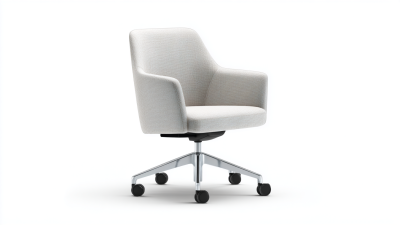
Understanding the Benefits of Upholstered Office Chair for Your Workspace
-
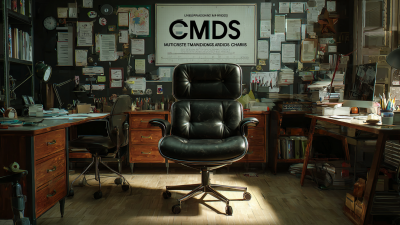
Understanding the Manufacturing Standards for the Best Office Armchair
-

7 Key Reasons Why Best Leather Boardroom Chairs Enhance Executive Productivity
-
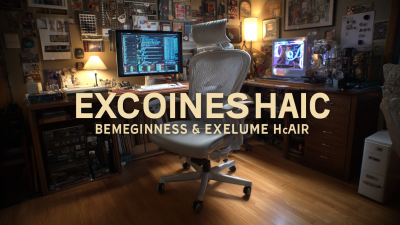
Unlock Ergonomic Excellence: A Deep Dive into the Specifications and Setup of the Best Business Chair
-
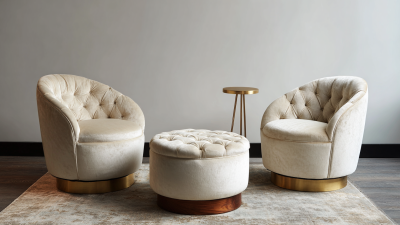
5 Essential Tips for Choosing the Best Nesting Chairs for Your Space
-
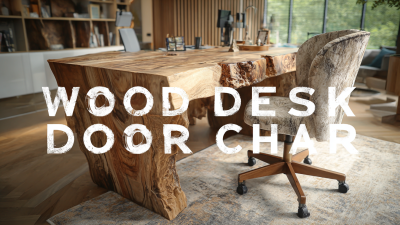
2025: How Smart Innovations Are Redefining the Best Wood Desk Chair Experience for Global Buyers